On-farm ammonia reduction trials see breakthrough
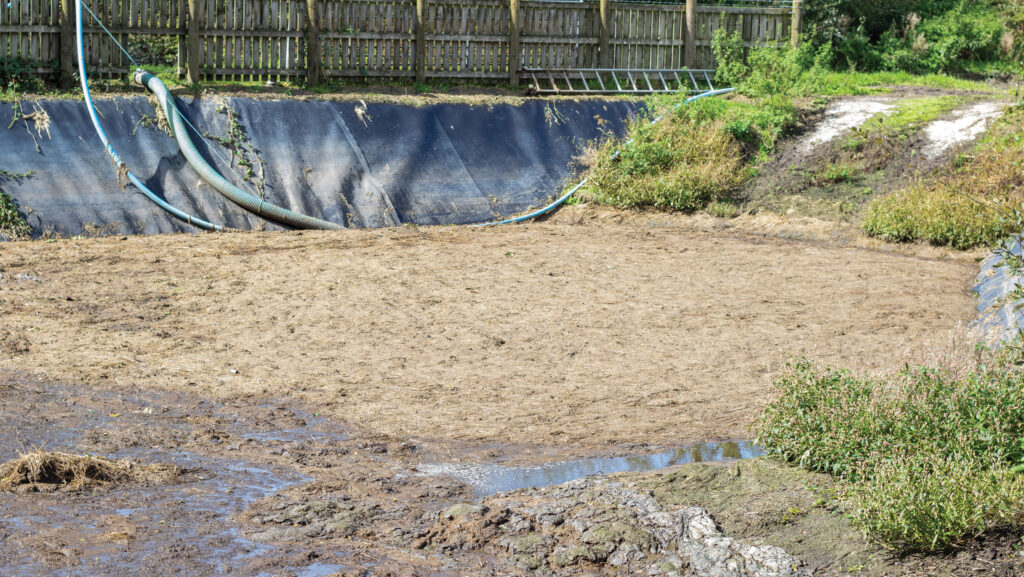 Sensors tracked carbon dioxide and ammonia in slurry © Rhian Price Media
Sensors tracked carbon dioxide and ammonia in slurry © Rhian Price Media Treating slurry with a biological solution has been found to increase ammonia retention by 43%, lowering odour and ammonia emissions.
Pruex, the supplier of the product, carried out trials on eight dairy farms, all calving year-round, as part of a Welsh government-funded project in partnership with Aberystwyth University and the University of Aberdeen.
See also: New slurry tech for storage and handling benefits pig farm
Four dairy farms applied the biological treatment, while four farms remained untreated.
Treatment involved three steps:
- The application of Pruex to cows’ drinking water at 1 litre/day.
- Application of another biological solution when cows walked through a crush called Cynthia, which has built-in spray nozzles. This sprayed cows’ feet, legs and udder post-milking automatically at a rate of 5ml a cow twice daily.
- Scraper tractors or quad bikes with mounted sprayers applied 2 litres of product mixed with water to cubicle passageways when about 1cm depth of slurry was present.
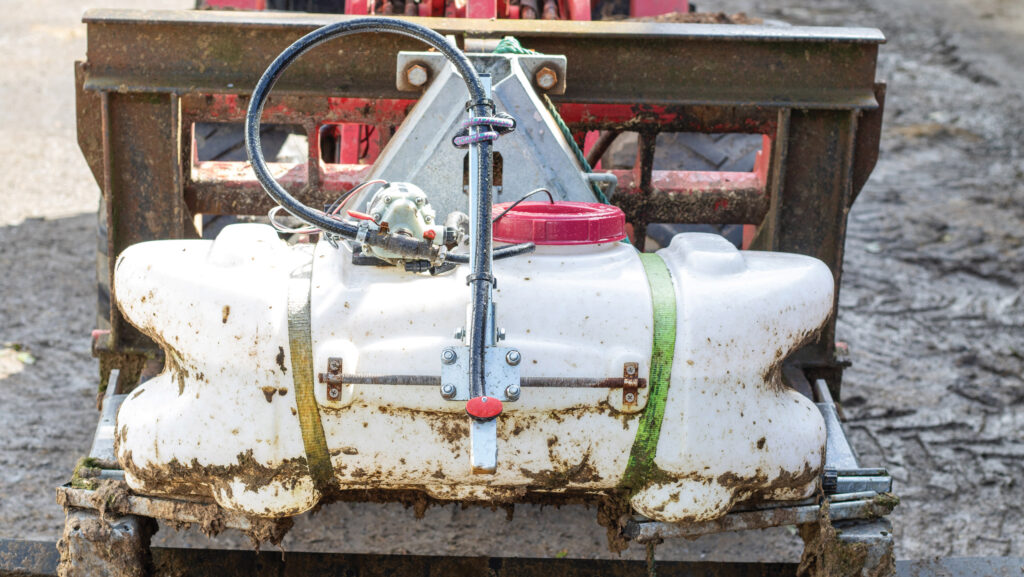
Sprayer mounted on scraper © Rhian Price Media
These applications encouraged aerobic bacterial growth, which Pruex says is crucial for stabilising slurry.
The trial ran when cows were housed from October 2024 to March 2025. Slurry samples were collected fortnightly and tested for total nitrogen, ammonia, ammonium and nitrate.
In addition, laboratory sensors monitored carbon dioxide and ammonia levels in slurry as well as temperature and humidity.
Results showed that on treated farms, slurry was stabilised, and it retained 43% more ammonium.
Cost of equipment
The total cost of equipment is:
- £850 for the water pump
- £350 for the sprayer
- £4,500 for the Cynthia crush sprayer
- Total: £5,700
Solution rates vary through the Cynthia crush according to cow numbers, but a 130-cow herd doing 9,000 litres would use £9,600 worth of product (0.008p/litre).
How it works
Company director Aled Davies says that understanding how the product works relies on knowing how urine and dung react chemically.
When urine and dung mix, the enzyme urease breaks down urea into ammonia, he explains. This pollutant releases an odour and escapes into the atmosphere.
The Pruex bacteria change the chemical pathway and produce ammonium rather than ammonia. (Unlike ammonia, ammonium is available to plants.)
By stabilising slurry in housing, the bacteria work aerobically to prevent the anaerobic fermentation that would otherwise produce ammonia and methane – both damaging to soil, crops and the environment.
They then continue to work under anaerobic conditions within the lagoon. This approach also challenges assumptions that grazing is better for the environment, he believes.
“In nature, predators would cause cows to mob-graze, mixing dung, urine and soil tightly. [Set-stocked] grazing systems don’t graze cattle tight, so it can take a year for nitrogen to become available to plants.”
The bigger picture
More than one-quarter of ammonia emitted is generated in animal housing, with a further 37% released during application of synthetic fertiliser.
“Trying to do something in the slurry pit is futile without stopping the emissions inside the shed,” he points out.
Modelling suggests that if 172 Welsh dairy farms adopted the system, total national ammonia emissions could be cut by 24% (see table).
But the real breakthrough, he says, is that these reductions come without sacrificing production.
“This is high-production, regenerative farming at scale,” says Aled, who believes the technology could be integrated into water catchment programmes, or funded under future environment schemes.
Potential for reduction in ammonia emissions |
|||
|
Emission source |
Baseline emissions’ (’000t annually) |
Ammonia reduction (’000t annually by using Pruex product) |
Remaining emissions (’000t annually) |
|
Housing |
2.46 |
0.332 |
2.128 |
|
Storage |
1.054 |
0.142 |
0.912 |
|
Application |
2.108 |
0.284 |
1.824 |
|
Hard standings |
0.264 |
0.036 |
0.228 |
|
Fertiliser |
3.514 |
0.331 |
3.183 |
|
Total |
9.4 |
1.125 |
8.275 |
|
Notes: Baseline emissions are calculations from National Atmospheric Emissions Inventory and Defra, applied to Welsh dairies. Pruex calculates that, based on a 41.2% uptake of the Welsh national herd (172 dairies and 85,125 cows), ammonia could be reduced by 24% (2.25 reduction divided by 9.4 total emissions) based on findings from the study. |
|||
Arnould and Marialle Ramaker-Marsman, Tyfri Farm, Carmarthen
Husband and wife Arnould and Marialle emigrated from the Netherlands to West Wales nearly a decade ago after buying the redundant farmstead Tyfri.
High land prices meant buying a farm in the Netherlands was unattainable; Dutch farmers also face some of the strictest nitrogen restrictions worldwide, including destocking.
Farm facts
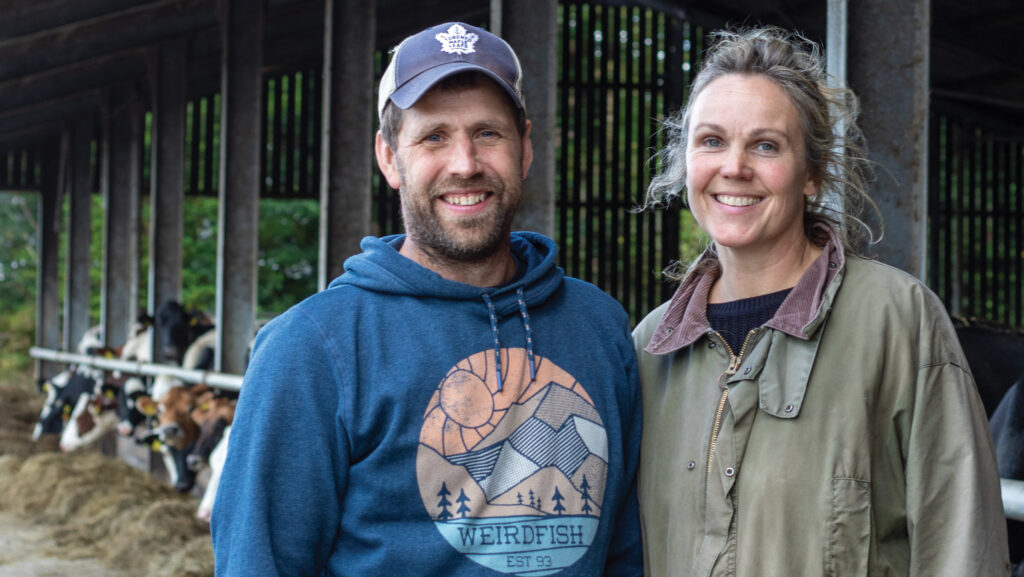
Arnould and Marialle Ramaker-Marsman © Rhian Price Media
- Farming 64ha (34ha owned)
- Milking 60 Holsteins and 16 Jerseys
- Yielding 9,500 litres at 4.3% butterfat and 3.4% protein
- Cows milked twice daily through an 8/16 swingover herringbone parlour
- Supplying Dairy Partners
When they were asked to take part in the trial, they jumped at the chance. They milk 76 cows, averaging 9,500 litres at 4.3% butterfat and 3.4% protein.
Cows are housed year-round and fed a simple ration of three bales of haylage and 2t of purchased maize alongside concentrate in the parlour of up to 9kg a head a day.
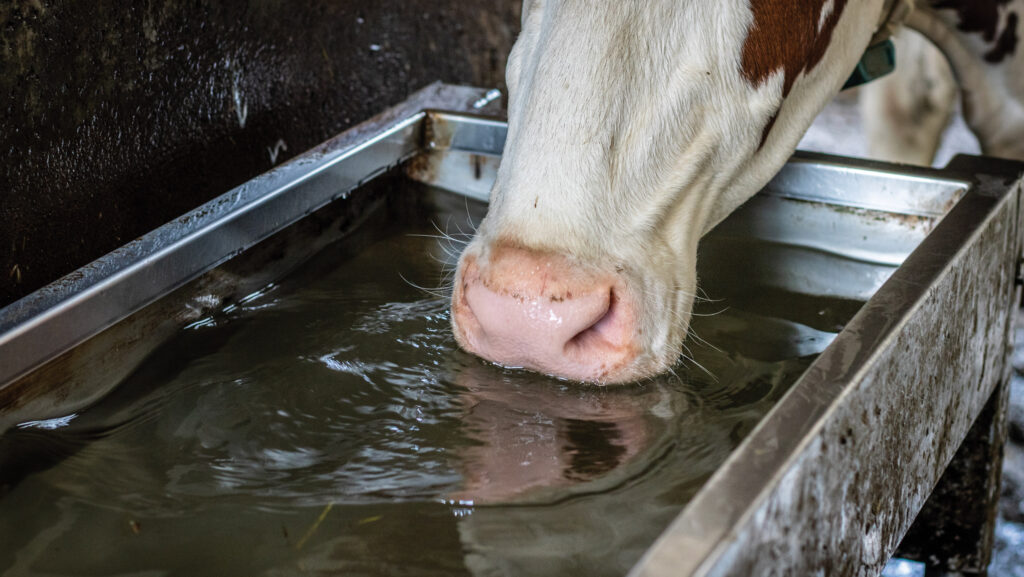
Product is dosed in the cows’ drinking water © Rhian Price Media
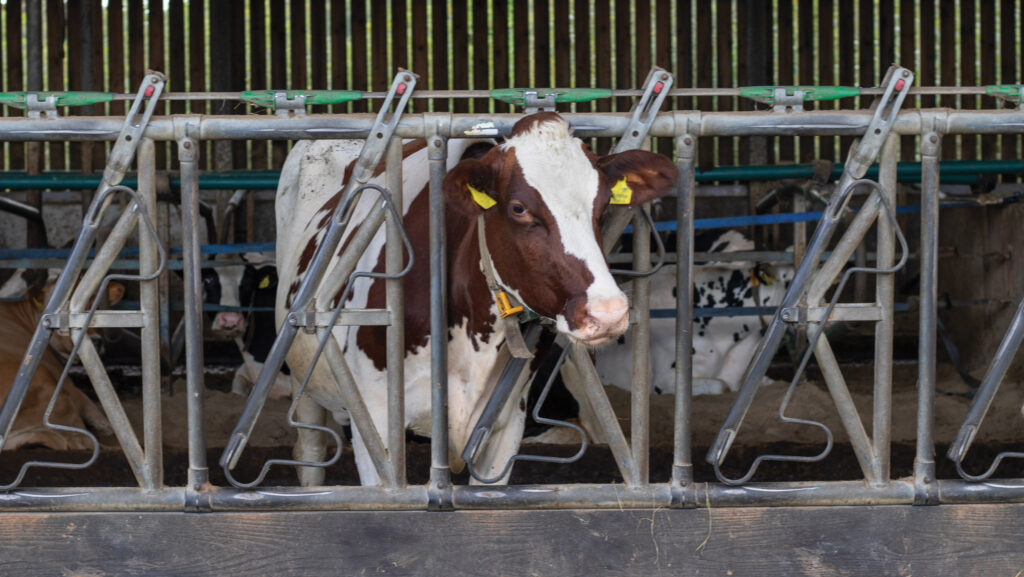
Cow at Tyfri Farm © Rhian Price Media
Lowering fertiliser use
The Marsmans continued using the products after the government trial ended and Pruex assessed milk production, grass growth, silage quality and visual evaluations of soil structure).
They have completely offset artificial nitrogen on the fields closest to the farmstead, saving 8.4t of fertiliser worth £4,032.
“There’s more white clover, which I think is self-seeding through the slurry, which will be fixing more nitrogen,” says Arnould.
They applied 23,385 litres/ha of slurry after first and second cut, and half that amount to later cuts. He is confident they can eliminate fertiliser use altogether next year.
Soil assessments show small improvements in surface run-off and structure scores, with no change in texture or colour.
However, soil improvements can take time to emerge, says Gareth Davies, independent grassland adviser and Pruex representative.
Better silage, more milk
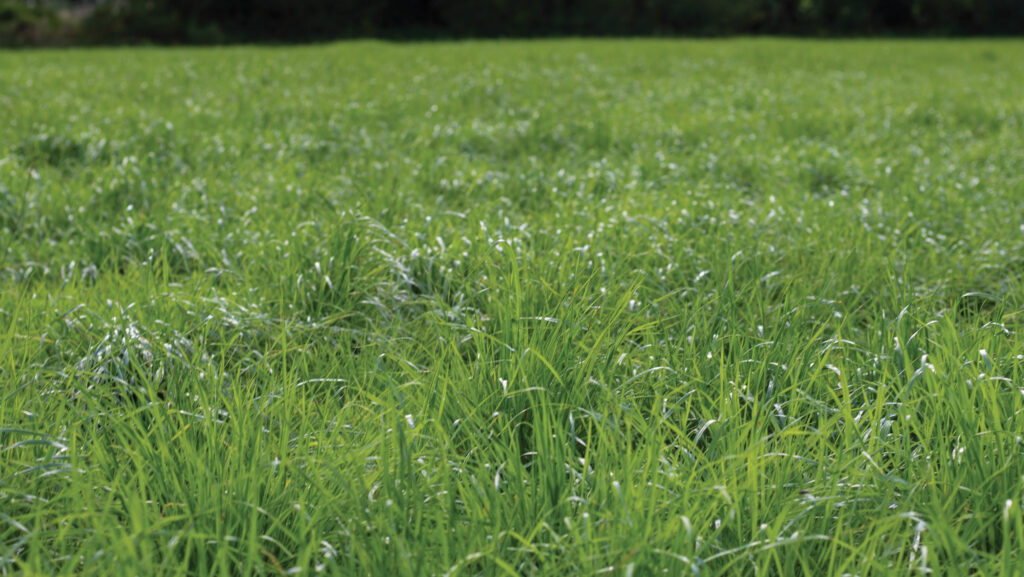
Grass using slurry and no fertiliser © Rhian Price Media
First- and second-cut silage samples contained more than 25% sugars. While protein percentages were low (about 10-11%), total digestible protein was high – at 9% for first cut and 8% for second cut, compared with a typical upper limit of 7.5%.
Once fed, these boosted milk by 4 litres daily to 26 litres, with no other changes.
Grass growth and biodiversity
Despite not reseeding for more than 20 years, the farm grew 12.4t of dry matter (DM)/ha from 1 April (after first cut) to 22 September – the equivalent of 76kg DM/day.
Arnould notes it has been a good grass-growing season in West Wales, which will have contributed to growth, and they will take six silage cuts instead of the usual five.
The Marsmans have also seen a surge in biodiversity. “We have never seen so many butterflies and birds, and we have dragonflies for the first time,” says Marialle.
Arnould says the first change they noticed was less odour. “And when spreading slurry, no scavenger birds came to the field. One positive has led to another,” he adds.
Both hope politicians from the Netherlands and the UK recognise farmers are part of the solution to lowering emissions – not the problem.
